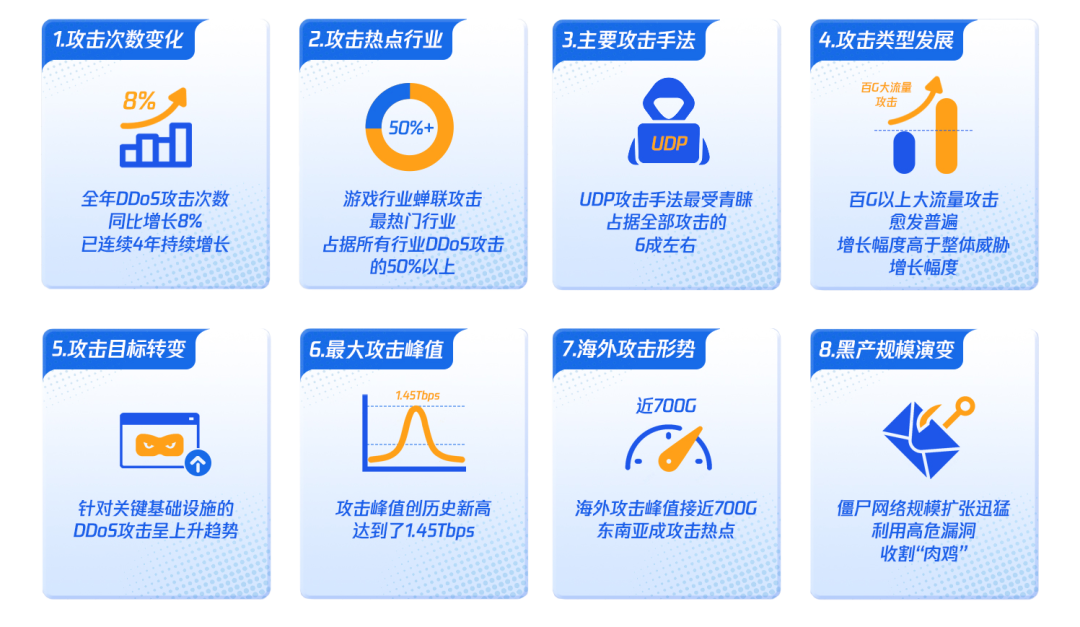
头哥数据库实验总结
这里写目录标题实验二第一关:插入数据插入功能格式例题第二关:更新数据(修改数据)修改数据格式更新单个列更新多个列删除列例题字符串拼接concat函数+字符串修改substring函数例题rtrim函数例题第三关:删除数据数据的删除delete函数例题实验三:简单查询第一关 简单查询select函数例题like语句distinct关键字例题数据之间有交集的查找例题==为什么不能这样==实验二第一关:
创建以及修改表
第一关:创建表
create table Student (
Sno char(10) primary key,
Sname varchar(20),
Ssex char(2),
Sage smallint,
Sdept varchar(20),
)
第二关:修改表
USE CS_yx_DB
GO
SET NOCOUNT ON
-- ********** Begin ********** --
-- ********** 此处写“3、修改sdept列”的SQL语句 ********** --
alter table Student alter column Sdept varchar(30);
-- ********** End ********** --
GO
USE CS_yx_DB
GO
SET NOCOUNT ON
-- ********** Begin ********** --
-- ********** 此处写“2、删除Cpno列”的SQL语句 ********** --
alter table Course drop column Cpno;
-- ********** End ********** --
GO
第三关:删除表
USE CS_yx_DB
GO
SET NOCOUNT ON
-- ********** Begin ********** --
-- ********** 此处写“1、删除三张表”的SQL语句 ********** --
drop table SC
drop table Student
drop table Course
-- ********** End ********** --
GO
❤️实验二:对表的插入,修改,删除数据
⭐️第一关:插入数据
❄️插入功能格式
insert into 表名 values("....")
注意:括号内的值如果不规定顺序就是默认顺序
❄️例题
实验完成要求
根据代码区的提示,将插入数据的SQL语句书写在对应的代码区中。
1、为Student表添加两行记录如下表所示。
sno sname ssex sage sdept
001 Smith m 18 CS
002 Ketty f 19 MA
insert into Student(sno,sname,ssex,sage,sdept)
values('001','Smith','m',18,'CS')
或者
insert into Student
values('002','Ketty','f',19,'MA')
⭐️第二关:更新数据(修改数据)
❄️修改数据格式
UPDATE语句由三部分组成:
要更新的表;
列名和它们的新值;
要更新行的过滤条件。
⛅️更新单个列
update sc
set grade=grade+5
where grade<60
⛅️更新多个列
update sc
set ssex=ssex+5,grade=grade+5
where grade<60
⛅️删除列
update sc
set ssex=null(如果可以取值为null的话)
where grade<60
⛅️例题
将不及格的学生成绩加5分。
update Sc
set grade=grade+5
where grade<60
❄️字符串拼接
⛅️concat函数
语法格式
CONCAT(char c1, char c2, ..., char cn)
其中char代表字符串,定长与不定长均可以
⛅️+
直接将两个字符串相加
Sno(char)='S'+Sno(char)
❄️字符串修改
⛅️substring函数
语法
substring(字符串,x,y)
从第x位开始取,一直取到y位
⛅️例题
将学生的学号前的‘S’删掉
update Student
set Sno=substring(Sno,2,len(Sno)-1)
注意:数据库中的起始序号是1不是0
⛅️rtrim函数
rtrim是一个函数,返回删除字符串右边的空格后的字符串
语法
rtrim(字符串)
⛅️例题
在学生学号的后面加上‘S’(注:**‘S’要大写,学号的类型是char(10))
update Student set Sno=RTRIM(Sno)+'S';
注意:一定要先去掉空格才能+‘S’,否则会加到后面没有用到的空格上
⭐️第三关:删除数据
❄️delete函数
语法:
DELETE FROM 表名称 WHERE 列名称 = 值
delete from sc
where grade is null;
注意:数据库中判断值是否为空可以的语法是xx is null
⛅️例题
删除年龄等于18岁的女(f)同学
delete from Student
where sage=18 and ssex='f'
❤️实验三:简单查询
⭐️第一关 简单查询
❄️select函数
语法
select 数据类型
from 表名
where 条件
⛅️例题
查询先行课程不为空的课程。(使用*表示查询结果)
select *
from course
where cpno <> ''
注意:
数据库中的不等于可以用!=也可以用<>表示
数据库中”空“值得单引号内不用加空格
❄️like语句
% :代表一串字符串
_:代表一个字符
当所查询的字符中有%或者_时,可以用escape‘\’来表示‘\’后面的一个字符为转义字符
语法:
'DV\_%i_ _' escape '\'
表示的意思就是查找DV_…i_ _得字符串
❄️distinct关键字
取出重复的数据
语法
⛅️例题
使用distinct关键字查询学生表中不同的系
并列出系
select distinct sdept
from student 在这里插入代码片
❄️数据之间有交集的查找
⛅️例题
查询90分以上学生的选课信息,
列出学号,姓名,课程号,成绩。
SELECT A.sno,A.sname,C.cno,C.grade
FROM Student A,SC C
WHERE grade>90 and A.Sno=C.Sno
其中得A.Sno=C.Sno意思就是:先在c中查到的grade>90的学生学号,因为sc表中没有存储姓名,姓名存储在student表中,所以需要用学号(sc和student的公共项数)进行映射
⛅️为什么不能这样
查询90分以上学生的选课信息,列出学号,姓名,课程号,成绩。
⛅️因为前者时查找的是有选课分数>90的学生的所有选课成绩
select student.sno,sname,cno,grade
from sc,student
where sc.sno=student.sno
and student.sno in
(
select sno
from sc
where grade>90
)
这才是正确答案
select student.sno,sname,cno,grade
from sc,student
where grade > 90
and student.sno=sc.sno
⭐️第二关:嵌套查询
⛅️第一题
查询CS系学生选择的课程,列出学号,课程号,成绩
select sno,cno,grade
from sc
where sno in
(
select sno
from Student
where student.sdept='CS'
)
⛅️第二题
查询没有选C06(课程号)课程的同学的学号,姓名,性别
select sno,sname,ssex
from student
where sno not in
(
select sno
from sc
where cno ='C06'
)
⛅️第三题
查询CS系没有选择'DB'课程学生的姓名,列出学生姓名。
select sname
from Student
where sdept='CS' and sno not in
(
select sno
from SC
where cno in
(
select cno
from Course
where cname='DB'
)
)
注意:最好不要再嵌套内的条件中写not,因为很难判断,最好就在第一个循环中写not
⛅️第四题
查询‘DB’课程考最高分的选课信息。
列出学号,课程号,成绩
select sno,cno,grade
from SC
where grade in
(
select max(grade)
from SC
where cno in
(
select cno
from Course
where cname='DB'
)
)
⭐️总结
1.如果是查询的数据都在一个表中,那么就用嵌套循环,如果是不同表中的数据就用连接循环
2.嵌套循环时,按照语句顺序,首先写最内部的循环
比如
查询CS系没有选择'DB'课程学生的姓名,列出学生姓名
可以先查找“没有选择db课程”
即
not in
(
select cno
from course
where cname='DB'
)
然后查找学生姓名,即用sc,将cno和sno结合就能查找到姓名
select sname
from Student
where sdept='CS' and sno not in
(
select sno
from SC
where cno in
(
select cno
from Course
where cname='DB'
)
)在这里插入代码片
⭐️实验四第四关不会!
❤️实验四:聚合查询
和前面的查询最主要的区别就是,聚合查询可以查找以某个学号或者是课程号作为第一列的集合表
select 后面加的,group by后面都要加上去
⭐️eg1:
查询每个学生不及格的课程数,列出学号和不及格课程数
(列名为:scnt)
select sno,count(*) as scnt
from sc
where grade<60
group by sno意思就是以不同的学号作为第一列元素
⭐️eg2:
查询每个系女同学的平均年龄,列出所在系和平均年龄
(列名为:sageavg)。
select sdept,avg(sage) as sageavg
from student
where ssex='f'
group by sdept
⭐️稍微难一点的eg3:
查询平均分最高的学生的姓名。
select sname
from student
where sno in
(
select sno
from sc
group by sno
having avg(grade)>= all(select avg(grade)
from sc group by sno)
)
⭐️稍微难一点的eg4:
注意:课程号(course表),课程名(course表),不及格人数(sc表)不在同一个表中,所以要使用连接查询
查询不及格人数大于等于2人的课程,列出课程号,
课程名,不及格人数(列名为scnt)
select sc.cno,cname,count(*) scnt
from sc,course
where sc.cno=course.cno and grade<60
group by sc.cno,cname having count(*)>=2;
⭐️有点小难的eg5:
查询E系平均成绩最高的同学的姓名,列出姓名
select sname from Sc,Student
where Sc.Sno=Student.Sno and Sdept ='E'
group by Sname
having avg(grade)>=all
(
select avg(grade) from Sc
where sno in
(
select sno from Student where Sdept='E'
)
group by sno
)
1.只要select语句内有聚合函数的话需要group by
2.只要语句前面加了group by xxx,那么having里面的语句也要加group by xxx
❤️实验五:约束和索引
⭐️约束
❄️主键约束
当一个列被指定为主键之后,该列就不为空,而且不会有重复值出现,这样逐渐才能唯一标志一条记录
⛅️建表时创建主键
create table 表名(
id int(11) primary key
}
⛅️修改表的指定主键
alter table 表名 add primary key(主键列)
⛅️删除主键
alter table 表名 drop primary key;
❄️非空约束not null
某些列不能插入为null值,所以可对列添加非空约束:
create table 表名(
id int(11) primary key auto_increment,
name varchar(255) not null
);
❄️唯一值约束unique
唯一约束 unique
某些列不能插入重复的值,所哟一可对列添加唯一约束
create table 表名(
id int(11) primary key auto_increment,
name varchar(255) not null unique
);
❄️外键约束
1.外键必须是其他表的主键
2.外键可以为空
3.外键可以重复
create table sc(
sno char (9),
cno char(5)
primary key (sno ,cno),
foreign key(sno) reference student(sno)
foreign key(cno) reference course(cno),
意思就是在student和course中有存在的(sno/cno)的才能存入sc
)
❄️检查约束
eg:
alter table student add constraint stu_def_ssex
default 'm' for ssex
❄️缺省约束
eg:
alter table student add constraint stu_def_ssex
default 'm' for ssex
❄️例题
1、为Student表的Sage列添加约束,使其取值小于30岁(约束名:stu_chk_sage)
2、为student表的Ssex列添加约束,使其只能取值‘m’或‘f’(约束名:stu_chk_ssex)
3、为Student表的ssex列添加缺省约束,缺省值为‘m’(约束名:stu_def_ssex)
4.为SC表的grade列添加检查约束(1到100分)(约束名:stu_chk_grade)
alter table Student add constraint stu_chk_sage
check(sage<30);
alter table student add constraint stu_chk_ssex
check(ssex='f' or ssex='m')
alter table student add constraint stu_def_ssex
default 'm' for ssex
alter table sc add constraint stu_chk_grade
check (grade>=1 and grade<=100)
⭐️索引
❄️为什么要引入索引
索引是对数据库表中的一列或者多列进行排序的一种结构,可以大大加快mysql检索的速度
❄️索引的优缺点
优点:提高了检索效率
缺点:占据了内存空间,创建索引和维护所以都要耗费时间
所以可以在经常用到的列上建立索引,但是在重复值多或者是数据值很少的列上就不加了
❄️索引的建立和删除
⛅️建立唯一索引
唯一索引是不允许表中任何两行具有相同索引值的索引
create unique/cluster index 索引名 on 表名(列名)
⛅️递增递减索引
eg:按学号递增的索引
create unique index snoindex on student(sno asc)
asc:升序 dec:降序
❤️实验六:视图
⭐️视图的作用
1.试图能简化用户的操作,比如需要连接查询时,本来需要连接多个表,但是现在是需要连接一个表
2.视图是一个虚拟的表,能增加数据的安全性,试图屏蔽了底层的表结构,从而更好的保护了数据的安全性
⭐️创建视图
❄️例题
1、创建视图vcg,查询课程名为’Math’的课程中,成绩不及格的学生,列出学号,课程号,成绩。
2、修改视图vcg中的数据,将成绩加5分
3、删除视图vcg中的数据,将成绩小于40分的选课信息删除。
create view vcg as
(
select sno,cno,grade
from sc
where grade<60 and cno in
(
select cno
from course
where cname='Math'
)
)
update vcg
set grade = grade + 5
delete from vcg
where grade < 40
⭐️使用视图
❄️例题
1、创建视图vsumc,使其包含每个选了课的学生获得的学分(成绩及格才能得学分)。列出学号和总学分(列名:ssumc)。
2、使用vsumc视图,查询男同学总学分高于12分的学生的学号,姓名,性别。
3、使用vsumc视图,查询总学分最高的学生,列出学号,姓名,性别,年龄,所在系
4、使用vsumc视图,查询平均分大于等于65分的学生的学号,平均分(列名:savg),总学分(列名:ssumc)
1.
create view vsumc as
(
select sno,sum(Ccredit) as ssumc from sc,course
where grade>=60 and sc.cno=course.cno
group by sno
)
2:
因为视图也是一张表,所以可以这样写:
select student.sno,sname,ssex
from student,vsumc
where ssex='m' and ssumc>12 and student.sno=vsumc.sno
3:
select vsumc.sno,sname,ssex,sage,sdept
from vsumc,Student
where ssumc >= all(
select ssumc from vsumc
) and Student.sno = vsumc.sno
4:
attention:where—group by—having
select SC.sno, avg(grade) savg,ssumc from vsumc,SC
where SC.sno=vsumc.sno
group by SC.sno,ssumc
having avg(grade)>=65
实验七:用户权限
更多推荐
 已为社区贡献1条内容
已为社区贡献1条内容









所有评论(0)